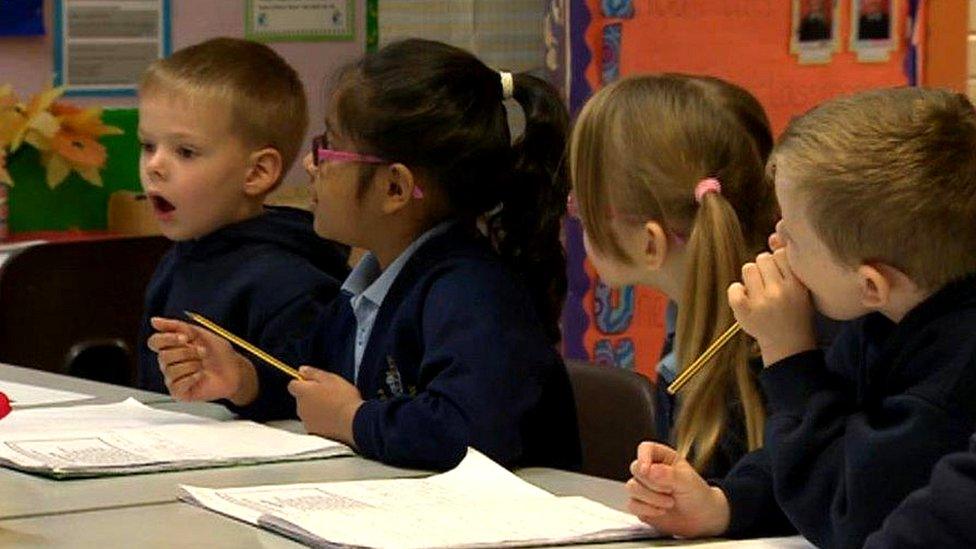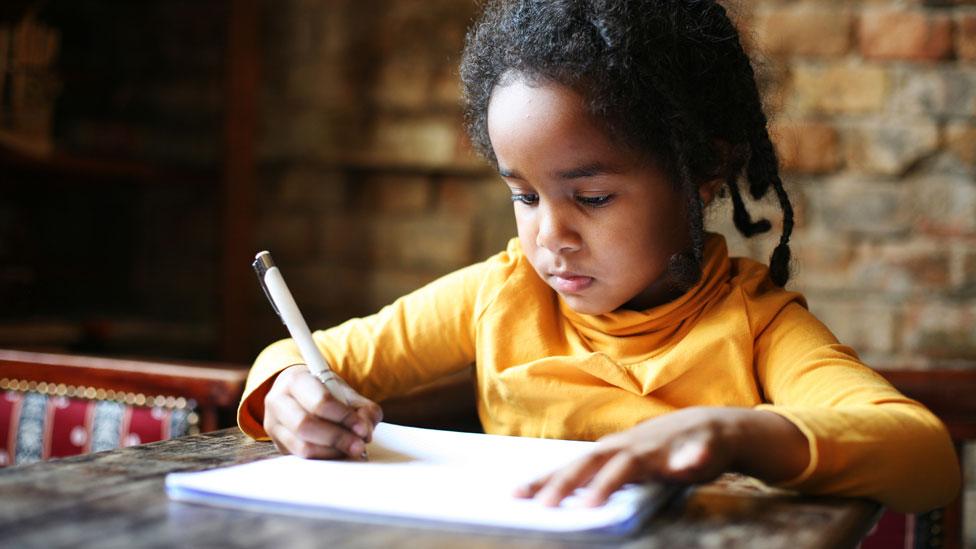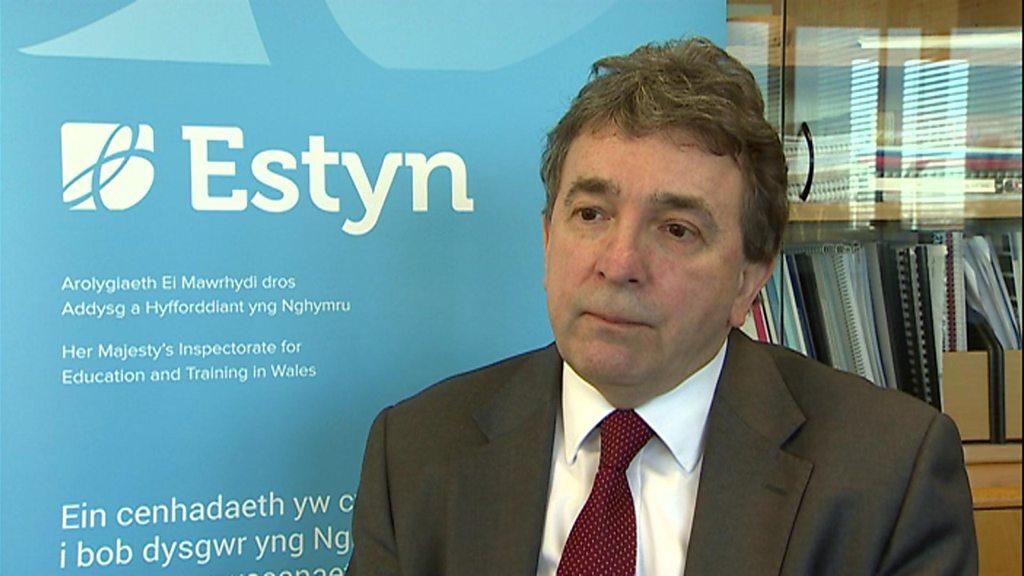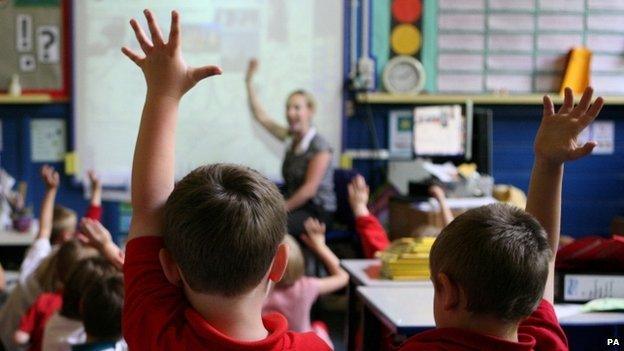Key findings of Estyn annual report in Wales
- Published

Estyn's annual report is a wide-ranging review of how schools, further education colleges and other places of learning are performing, following a year of inspections.
The gap between education establishments which are doing well and those that are not is still too wide, the watchdog said.
Altogether inspectors looked at 178 primary schools and 33 secondary schools in 2015-16, as well as two further education colleges, workplace learning places, special schools and pupil referral units.
Here is a summary of findings in key areas:
TEACHING
Teaching is one of the weakest aspects of provision in most sectors.
There is a tendency towards ticking boxes in lesson planning. Teachers may therefore become too concerned with following procedures rather than thinking creatively about the best way to encourage learners to achieve
Where teaching has shortcomings, leaders do not have a clear idea of what needs to be improved. Too few schools help staff to make the best of professional learning opportunities.

PRIMARY SCHOOLS
Seven out of 10 primary schools inspected this year are good or better, an improvement on the previous year
The proportion of excellence in primary schools continues to increase, to 22% this year from 18% last year
Only seven primary schools (4%) were placed in a statutory intervention category after inspections - a reduction on the 20 schools (9%) identified last year
Many pupils do not have a strong enough grasp of the full range of ICT skills
Pupils' literacy skills continue to improve. In Key Stage 2, standards of literacy are good in about two-thirds of schools inspected. Outcomes improved across all core subjects
Inspectors highlighted good practice and successes, such as the year-on-year rise in literacy standards at Kitchener Primary School in inner city Cardiff. Here 27 different languages are spoken and English is spoken as an additional language by 86% of pupils. The school uses educational visits, a buddy system and story-telling as part of introducing new words, encouraging pupils to speak and making learning exciting.
Nicola Richards, acting head of Tonnau Primary School, which was praised by Estyn, said the school constantly challenges itself to improve
SECONDARY SCHOOLS
Only four out of 10 of the secondary schools inspected are rated good or better - the same as last year
The proportion of secondary schools identified as having some excellence has decreased to about a quarter this year from 38% last year
There is more excellent and unsatisfactory practice in the secondary sector than in primary schools
This increasing variation as children become older is also seen in the gap between girls' and boys' performance and the gap between the performance of pupils eligible for free school meals and their peers - (see the chart above)
The number of schools requiring monitoring by Estyn rose from 35% last year to 48% this year
EARLY EXAMS - UNINTENDED CONSEQUENCES
The growing trend of entering pupils early for exams like maths can reduce time for teaching and learning and students can end up sitting exams with an incomplete understanding of the subject.
SPECIAL SCHOOLS AND UNITS
Inspection outcomes for maintained special schools are not as good this year compared with previous years and outcomes for pupil referral units (Estyn inspected four of the 25 PRUs) remain poor.
MORE ABLE PUPILS
A common theme in inspections was "underachievement of more able learners, including those from deprived backgrounds".
In about a third of primary schools, more able pupils do not make enough progress because the work they are set is not challenging enough.
In secondary schools, GCSE and A level results should be better at higher grades.

DIGITAL LEARNING
The potential of digital learning is being fully realised in "very few" schools.
But the report highlights work done at Cornist Park Community Primary School in Flint, where there are pupils acting as leaders on digital learning and events to educate parents about digital technology in the home.
WELSH LANGUAGE
Standards of Welsh second language in many English-medium schools are improving, but most pupils lack confidence when speaking Welsh.
Meanwhile, in Welsh-medium schools, many pupils speak and write well in Welsh and use their language skills confidently across the curriculum.
ATTENDANCE AND BEHAVIOUR
Attendance is improving and rates of persistent absence continue to fall.
Many pupils behave well, are punctual and have positive attitudes to their learning.
In a few schools, the rate of persistent absence remains high and the attendance of pupils eligible for free schools meals is significantly worse than in similar schools.
REFLECTIONS ON PISA RESULTS
The latest disappointing international Pisa results, which came out in December, "continue to highlight important weaknesses in Welsh education".
Too many pupils lack basic skills in science, maths and reading and too few pupils work at the highest levels in these subjects.
Schools from the foundation phase onwards need to ensure that pupils develop strong foundations in these essential subjects.
COLLEGES
Two of Wales' 13 further education colleges were inspected and both were identified as having excellent practice.
Gaps between colleges' performance are narrow.
Coleg Cambria - one of the largest in the UK with more than 21,000 students and created out of a merger of Deeside College and Yale College in 2013 - is praised for its excellence.
- Published24 January 2017

- Published24 January 2017

- Published26 January 2016

- Published6 December 2016

- Published29 June 2016
